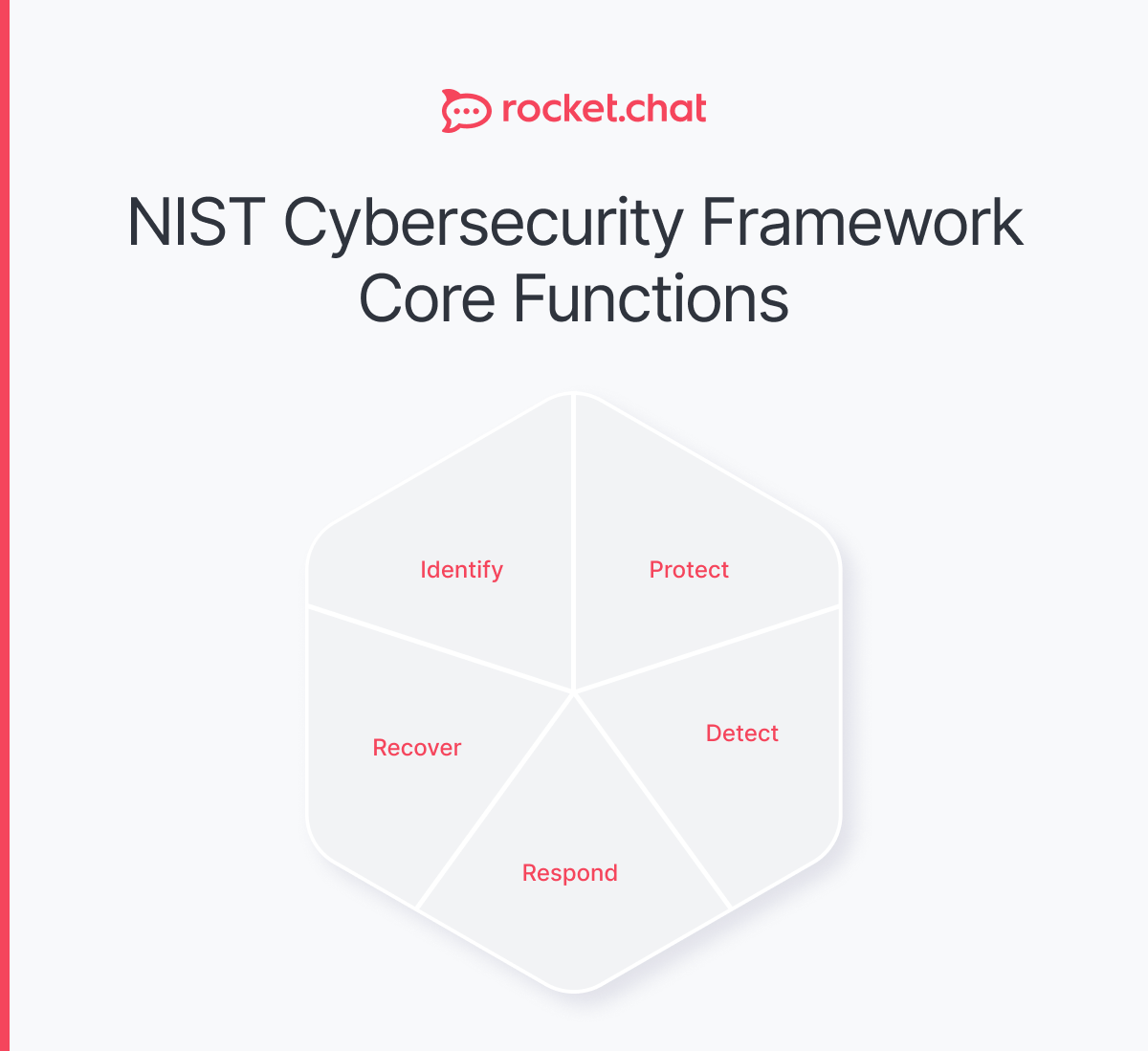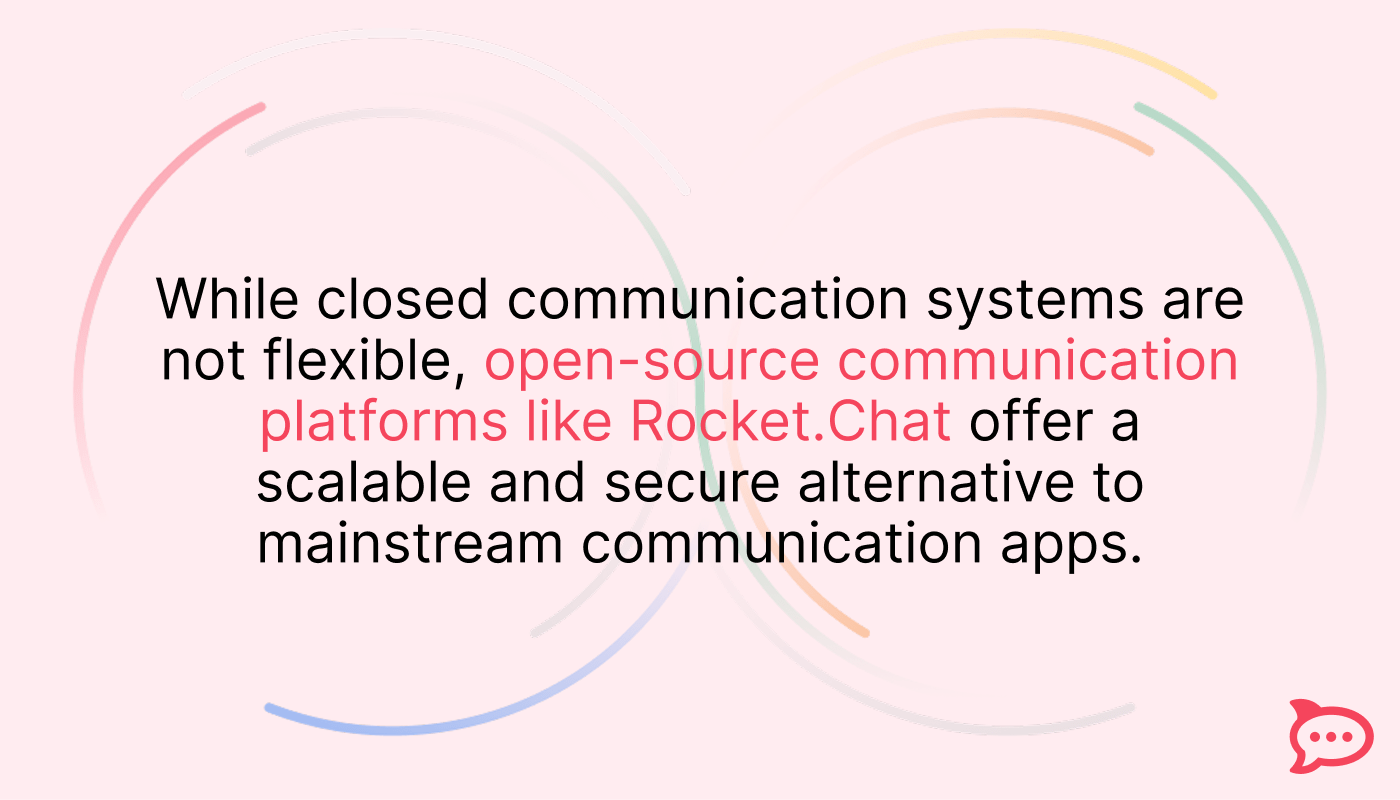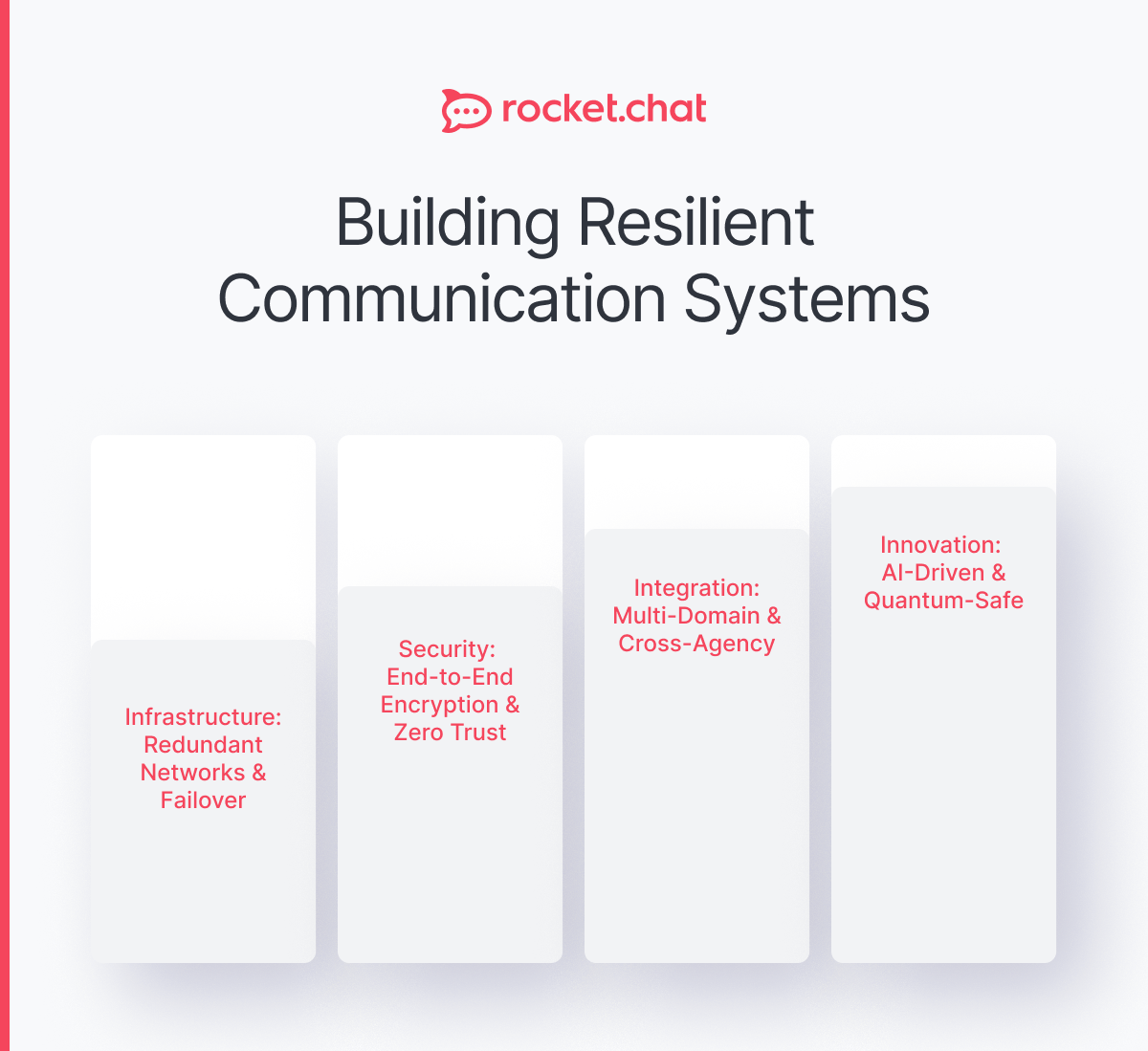
Mission critical communications ensure 99.999% uptime for first responders, defense operations, and critical infrastructure during emergencies when commercial platforms fail.
What you'll learn in this guide:
- What makes communication "mission critical" and how it differs from business communication
- Core technologies including PTT, IoT integration, and quantum-resistant encryption
- Implementation challenges faced by government agencies and enterprises
- Platform comparison between traditional LMR, commercial tools, and mission critical systems
- Best practices for deployment, testing, and regulatory compliance
- Industry use cases across public safety, healthcare, utilities, and defense
Quick stats:
- Organizations with security AI save $1.88 million on average compared to those without
- 68% of data breaches involve human elements, making secure protocols essential
- Ransomware attacks have doubled in critical sectors since 2023
- Mission critical systems require 99.999% uptime (5.26 minutes downtime annually)
Mission critical communications are the backbone of industries where failure is not an option. These systems must operate flawlessly even during extreme disasters, ensuring teams can coordinate responses and maintain operational continuity without interruption.
Take the 2023 Optus outage in Australia as an example. It disrupted services for approximately 10 million customers, including over 400,000 businesses. Some couldn't even call triple-0 in emergencies, highlighting the critical need for resilient communication infrastructure.
To address such vulnerabilities, modern secure team chat platforms incorporate features like real-time alert systems, end-to-end encryption, and AI-driven network monitoring to minimize failures and enhance security. According to IBM's 2024 Cost of a Data Breach Report, organizations with fully deployed security AI and automation saved an average of $1.88 million compared to those without these capabilities.
These innovations transform how organizations respond to crises in the most challenging scenarios. Let's examine how these systems meet the demands of high-stakes environments.
What is mission critical communication?
Mission critical communication refers to communication systems designed to function reliably during emergencies, disasters, and life-threatening situations where failure could result in loss of life, significant property damage, or operational collapse.
Key characteristics include:
- 99.999% uptime (less than 5 minutes downtime annually)
- Sub-second latency for real-time coordination
- Military-grade encryption protecting sensitive data
- Redundant infrastructure with automatic failover
- Interoperability across agencies and platforms
- Priority access during network congestion
Unlike commercial communication tools, mission critical systems are purpose-built for first responders, defense operations, utilities, healthcare facilities, and emergency management agencies that cannot afford communication failures.
How modern secure collaboration platforms fill gaps in traditional systems
Modern mission critical communications require more than just voice capabilities. Organizations must comply with strict regulations while maintaining secure collaboration tools that enable seamless teamwork across distributed teams.
Key advancements in secure collaboration platforms include:
AI-driven network resilience: Predictive algorithms identify and mitigate failures before they disrupt operations, reducing downtime by up to 73% according to recent network reliability studies.
End-to-end encryption: Platforms implementing advanced encrypted messaging prevent unauthorized access at every communication layer. This is critical as Verizon's 2024 Data Breach Investigations Report found that 68% of breaches involved human elements, making secure communication protocols essential.
Multi-channel interoperability: The ability to connect legacy radio systems, mobile networks, and digital collaboration platforms ensures seamless coordination across diverse infrastructure.
For example, during the 2023 wildfires in Greece, emergency teams used drones, satellite-based fire detection, and continuous aerial surveillance to provide real-time data, dramatically improving cross-agency communication and response times.
Key requirements for effective mission critical communications
When lives are at stake, communication systems must be failproof, just like FirstNet's Band 14 LTE network, which maintained connectivity for first responders during multiple hurricanes. Let's explore what makes modern systems effective and resilient.
Resilient infrastructure capabilities
Your teams must share live data even during network failures and natural disasters. According to FEMA's National Risk Index, over 99% of U.S. counties face moderate to very high risk from natural disasters, making infrastructure resilience non-negotiable.
For example, Greece used advanced integrated technologies to detect and mitigate wildfires before formal fire alerts were issued, demonstrating proactive risk management.
Additionally, edge computing reduces downtime in remote locations by processing critical data locally, ensuring teams stay connected even when central networks fail. Organizations implementing military communication systems require this level of redundancy.
Redundancy and failover mechanisms
No organization can afford a single point of failure to disrupt operations, especially during critical emergencies that require immediate response.
In emergency scenarios, first responders need priority access to dedicated broadband networks when commercial networks become overloaded. This capability proved essential during recent natural disasters.
Additionally, geographically distributed data centers prevent regional outages from disrupting operations. Organizations deploying air-gapped collaboration environments ensure that even complete internet failures won't compromise mission-critical coordination.
Interoperability across different technologies and agencies
Integration with existing tools and external teams is essential for unified operations that span multiple jurisdictions and organizational boundaries.
For example, companies in the EENA community prioritize interoperability as a core feature in public safety solutions, enabling seamless coordination across borders.

Vendors and agencies are actively bridging legacy systems with modern, cloud-based platforms. This approach helps unify teams even during multi-country disasters, as seen in recent European emergency response initiatives. Organizations implementing government communication strategies benefit from this interoperability.
Security and compliance considerations for sensitive information
Cyber threats are not the only risks affecting collaboration. AI-powered scams and ransomware have escalated dramatically, with sophisticated attacks targeting critical infrastructure at unprecedented rates.
Since 2023, ransomware attacks have doubled in critical sectors like government, energy, and healthcare, exposing sensitive data to the dark web and creating operational chaos.
That's why modern organizational security platforms employ a zero-trust security model with multi-factor authentication, role-based access controls, and end-to-end encryption at rest and in transit.
With these measures, organizations can authorize only the right personnel to access sensitive data and prevent breaches. Implementing NIST cybersecurity framework standards provides a comprehensive approach to securing mission critical communications.

Technologies enhancing modern mission critical communications
Mission critical communications leverage advanced technology to enhance speed, reliability, and situational awareness while addressing evolving cybersecurity threats. Let's examine the key innovations.
Push-to-talk and real-time communication capabilities
Push-to-Talk (PTT) services have significantly higher bandwidth than traditional Land Mobile Radios (LMR), enabling instant communication across teams over 4G, 5G, and satellite networks with real-time data sharing.
Modern PTT services integrate with IoT devices like drones and bodycams, combined with AI-driven analytics that allow responders to prioritize alerts based on severity or location automatically.
For example, 5G PTT supports data rates up to 100x faster than analog LMRs, enabling HD video transmission and real-time mapping for enhanced situational awareness. Organizations using instant messaging platforms benefit from these advanced capabilities.
End-to-end encryption and secure data transfer
To counter evolving cyberattacks targeting public safety networks, modern systems deploy multiple layers of protection:
Zero-trust architecture: Continuously authenticate users and devices, even within internal networks, preventing lateral movement by threat actors.
Quantum-resistant encryption: 5G Standalone networks integrate post-quantum cryptography to protect against future decryption attacks using quantum computing capabilities.
AI-driven threat detection: Identify unusual data access patterns in real-time, enabling immediate response to potential security incidents.
For example, at MWC 2024, Telefónica demonstrated Quantum-Safe Networks by operating a subsea surveillance submarine in real-time over 2,000 km away via virtual reality, using private 5G with post-quantum encryption.
Organizations implementing encrypted messaging apps benefit from these security innovations.
Integration with IoT and sensor networks
AI-powered sensors can detect environmental hazards, gunshots, and biometric vitals on the go, providing unprecedented situational awareness for first responders in dangerous environments.
However, these advancements come with security challenges. Quantum computing exposes 5G-connected IoT networks to significant risks that must be addressed proactively.
The 5G Americas white paper warns of "harvest now, decrypt later" attacks, where encrypted sensor data can be intercepted today and decrypted in the future using quantum technology.
Staying ahead of evolving threats is essential for securing mission critical communications. Adopting post-quantum cryptography and hybrid encryption models helps safeguard IoT networks against future cyberattacks.
Customizable workflows for emergency response
Rigid communication workflows fail during critical missions. Modern platforms must customize alerts, escalate protocols, and automate workflows for different emergency scenarios dynamically.
For example, Tokyo implemented AI-powered cameras to automatically detect fires and structural collapses in real-time, instantly alerting police, fire departments, and Japan's self-defense forces for coordinated response.
This automation reduces response times by several critical minutes during emergencies. Organizations implementing defense communication systems require this level of workflow customization.
Open-source adaptable platforms

While closed communication systems lack flexibility, platforms built on open standards offer scalable and secure alternatives to mainstream communication apps with vendor lock-in.
In fact, the German government prioritizes open-source for critical operations. The Centre for Digital Sovereignty is spearheading efforts to integrate secure, scalable, and open-source software across public administration.
Even the Federal Office for Information Security recognizes open-source platforms as a strategic advantage for cybersecurity and digital sovereignty. As organizations and governments embrace open-source solutions, this approach reduces dependency on proprietary vendors.
➡️ How Rocket.Chat enhances mission critical communications
Used by over 12 million privacy-conscious customers, Rocket.Chat provides secure, customizable communication solutions for mission critical environments. Unlike mainstream messaging apps, it provides:
- Zero-trust security model: Enforces multi-factor authentication, 180+ role-based access controls, and compliance with GDPR, HIPAA, and FedRAMP.
- Interoperability with legacy systems: Supports integration with LMR networks, IoT devices, and emergency response software.
- Redundancy and failover: Supports clustering and load balancing to maintain uptime during traffic spikes or server failures.
- Data sovereignty: Deploy on-premises or in private clouds, ensuring full control over sensitive data (crucial for governments, healthcare, and financial institutions).
Organizations implementing government chat solutions benefit from these comprehensive security features.
Mission critical communication platforms comparison
Implementation challenges for government agencies and enterprises
Secure communication comes with complex challenges when organizations rely on expensive proprietary solutions that limit flexibility and innovation.
Despite 89% of government leaders agreeing on modernizing their IT infrastructure, only 41% consider it a priority, creating a dangerous gap.
The result? Many agencies remain stuck with high costs and outdated systems that cannot meet modern security requirements. The solution lies in self-hosted and open-source options that reduce licensing fees.
Here are three critical implementation challenges:
Integration with legacy radio and communication systems
Relying solely on legacy radio and PBX systems is inadequate for modern mission requirements. Instead, adopt API-based architectures and federated messaging approaches.
Rocket.Chat's API-based architecture integrates with existing infrastructure, ensuring real-time cross-platform communication without replacing legacy systems entirely.
Organizations implementing military messaging systems require this integration flexibility.
Training and organizational adoption hurdles
Public sector workers often have limited digital skills, but most are eager to learn, especially in cybersecurity and communication systems that protect their missions.
While 72% of workers had no digital training in the past two years, those with higher education and advanced professional skills are more likely to seek digital upskilling opportunities.
Customizable user interfaces and role-based access controls allow teams to replicate familiar workflows, reducing training time significantly. Organizations implementing workplace team communication benefit from this approach.
Regulatory compliance requirements
Not complying with regulations can lead to concurrent legal battles and hefty fines that cripple organizational budgets and damage reputation.
Avoid such pitfalls with a flexible communication platform whose built-in audit logs, access controls, and compliance frameworks help meet strict standards automatically.
Implementing communication security best practices ensures regulatory compliance across jurisdictions.

Best practices for deploying secure mission critical communications
With a structured approach, organizations can minimize risks and maintain compliance with regulations while ensuring operational effectiveness.
Assessment and planning methodologies
- Align with regulatory requirements for secure deployment across all jurisdictions
- Assess network resilience against cyber threats and physical disasters systematically
- Conduct threat modeling to identify vulnerabilities in communication channels proactively
Testing and validation procedures
- Run failover tests to verify real-world redundancy capabilities under stress
- Execute interoperability tests to verify integration with other systems seamlessly
- Implement automated security testing to identify potential exploits continuously
Phased implementation approaches
- Gradually enable critical integrations for security teams in controlled environments
- Deploy in controlled environments before full-scale implementation across organization
- Use pilot programs with select teams to gather feedback and refine workflows
Training programs for end users
- Simulate social engineering attacks to improve threat recognition among staff
- Conduct role-based security training for users handling sensitive data regularly
- Provide ongoing security awareness programs instead of one-time training sessions
Leverage Rocket.Chat marketplace integrations for specialized needs
- Deploy pre-built security integrations from verified vendors quickly
- Automate workflows with chatbots and ITSM tools for efficiency
- Customize access controls and tailor apps via APIs and webhooks to meet strict regulatory standards
Organizations using chat platforms benefit from extensive marketplace ecosystems.
Industries relying on mission critical communications
Public safety and first responders
Police, fire departments, and EMS services require instant coordination during life-threatening situations. These organizations use mission critical communications for dispatch, tactical operations, and inter-agency collaboration.
Organizations implementing military chat systems benefit from similar security requirements.
Healthcare and hospitals
Medical facilities need secure, HIPAA-compliant communication for patient coordination, emergency response, and crisis management during mass casualty events.
Utilities and energy
Power grids, water systems, and energy providers use mission critical communications to coordinate restoration efforts during outages and protect critical infrastructure from cyber threats.
Transportation and logistics
Airlines, railways, and shipping operations require real-time coordination across distributed teams to ensure safety and operational efficiency.
Defense and intelligence
Military operations demand classified communication channels with the highest security standards for tactical coordination and intelligence sharing across allied forces.
Organizations implementing government messaging apps require defense-grade security.
Measuring mission critical communication effectiveness
Key performance indicators include:
- System availability: Target 99.999% uptime (5.26 minutes downtime annually)
- Mean time to recovery (MTTR): Under 5 minutes for critical failures
- Message delivery success rate: Above 99.9% under normal conditions
- End-to-end latency: Under 100ms for real-time coordination
- Security incident response time: Under 15 minutes for critical threats
- User adoption rate: Above 90% within 60 days of deployment
- Compliance audit pass rate: 100% for regulatory requirements
Organizations using team chat platforms should establish these baseline metrics.
Future trends in mission critical communications
Emerging technologies shaping the landscape:
- 5G and 6G networks: Ultra-low latency and massive IoT connectivity will enable new use cases for first responders with real-time video analytics.
- AI and machine learning: Predictive maintenance, automated threat detection, and intelligent routing will improve system reliability by 40-60%.
- Quantum-safe encryption: Post-quantum cryptography will protect against future decryption threats as quantum computing advances.
- Edge computing: Distributed processing will enable offline capabilities in remote locations without central connectivity.
- Satellite integration: Low-earth orbit constellations will provide global coverage for operations in remote areas.
- Extended reality (XR): AR and VR will enhance situational awareness for tactical operations with immersive coordination.
Organizations implementing out-of-band communication strategies prepare for these innovations.
Conclusion
Mission critical communications demand air-tight security, flexibility, and ease of use. Organizations must choose highly customizable platforms that suit their unique operational requirements and regulatory environment.
Rocket.Chat is a secure, open-source solution that gives you control over your data while meeting strict compliance standards across industries.
That's why Bridge 4 Public Safety uses Rocket.Chat to connect with thousands of first responders across 400+ agencies while complying with federal security standards.
Learn how Rocket.Chat can enhance your mission critical communications. Reach out to our team to explore deployment options.
Organizations seeking comprehensive chat app solutions benefit from Rocket.Chat's flexibility and security.
Frequently asked questions about <anything>
mission critical communications
What is the difference between mission critical and business critical communication?
How much does a mission critical communication system cost?
What are the main standards for mission critical communications?
Can commercial platforms like Teams or Slack be used for mission critical operations?


- Digital sovereignty
- Federation capabilities
- Scalable and white-labeled


- Highly scalable and secure
- Full patient conversation history
- HIPAA-ready


- Secure data governance and digital sovereignty
- Trusted by State, Local, and Federal agencies across the world
- Matrix federation capabilities for cross-agency communication
%201.svg)

- Open source code
- Highly secure and scalable
- Unmatched flexibility


- End-to-end encryption
- Cloud or on-prem deployment
- Supports compliance with HIPAA, GDPR, FINRA, and more


- Supports compliance with HIPAA, GDPR, FINRA, and more
- Highly secure and flexible
- On-prem or cloud deployment




